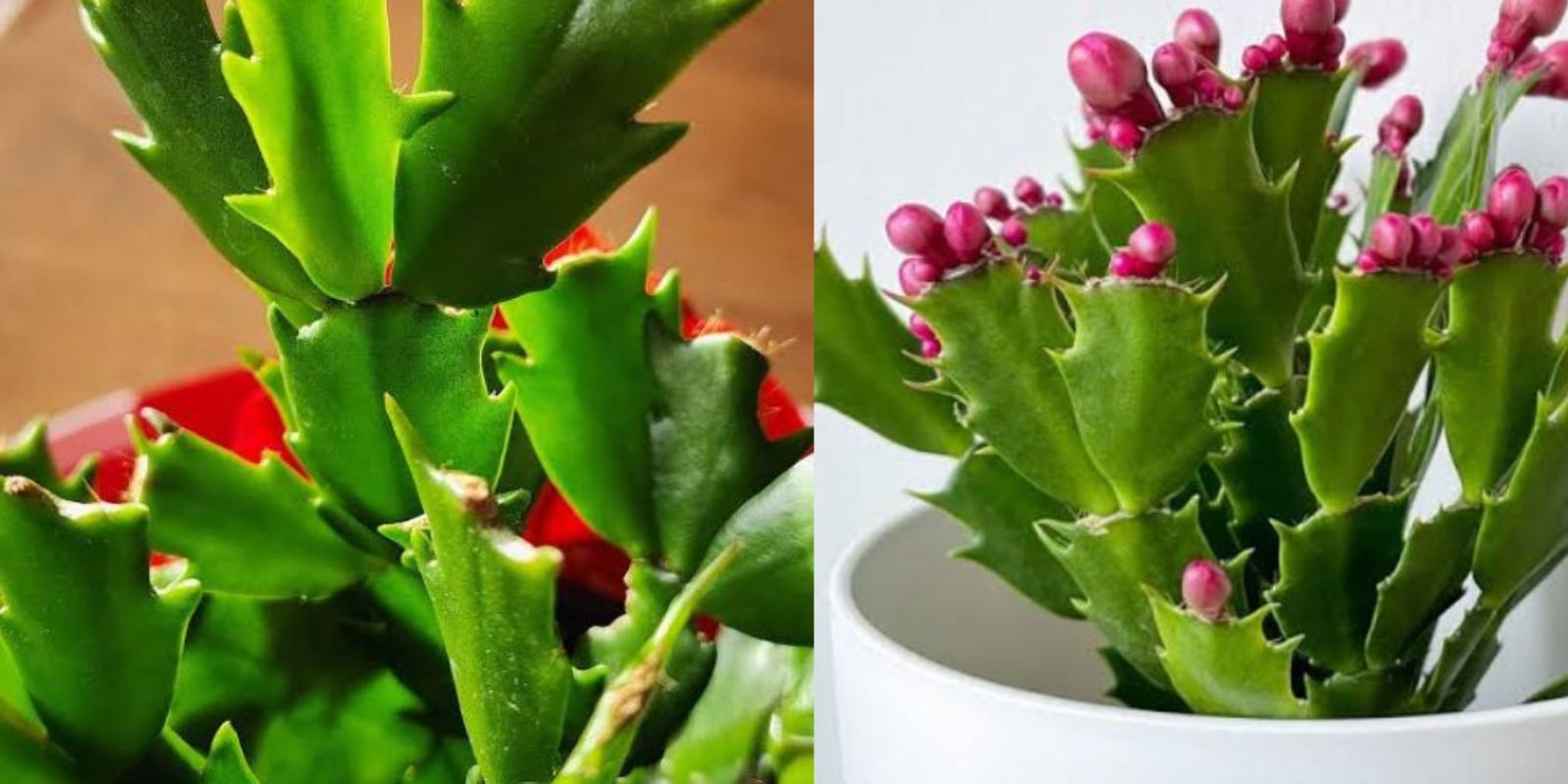Holiday cacti—Thanksgiving, Christmas, and Easter cactus—are beloved for their vibrant blooms that appear just in time for their respective holidays. Unlike the desert cacti most people are familiar with, these cacti are tropical epiphytes, meaning they thrive in humid environments and grow on trees in their natural habitats. With proper care, they can bloom beautifully year after year, making them a perfect addition to any indoor garden.
This comprehensive guide will walk you through everything you need to know about growing and maintaining these stunning plants, from identifying their differences to providing the right care for abundant flowering.
Understanding the Differences Between Holiday Cacti
Though they look similar, each of these cacti has unique characteristics that help distinguish them:
1. Thanksgiving Cactus (Schlumbergera truncata)
- Blooms in November (around Thanksgiving).
- Has pointed, claw-like edges on its segmented leaves.
- Flowers have a tubular shape with an asymmetrical appearance.
2. Christmas Cactus (Schlumbergera bridgesii)
- Blooms in December (around Christmas).
- Leaf segments have smooth, rounded edges instead of points.
- Flowers are more symmetrical and hang downward.
3. Easter Cactus (Rhipsalidopsis gaertneri)
- Blooms in March–April (around Easter).
- Leaf segments are more rounded and slightly bristly.
- Flowers are daisy-like, opening widely instead of forming a tube.
Knowing which type you have will help you provide the best care, ensuring the plant blooms at the right time.
How to Grow and Care for Holiday Cacti
1. Light Requirements
Holiday cacti thrive in bright, indirect light. They can tolerate some direct morning sun but should be protected from harsh afternoon sunlight, which can scorch their leaves. A north- or east-facing window is ideal.
If growing under artificial lights, use a full-spectrum LED grow light and keep it on for about 12-14 hours a day to mimic natural daylight.
2. The Best Soil for Holiday Cacti
Since these cacti are epiphytes, they need well-draining, lightweight soil to thrive. The ideal mix includes:
- 2 parts cactus potting mix
- 1 part perlite or pumice for drainage
- 1 part orchid bark to provide aeration
Avoid heavy, compacted soil, which can retain too much moisture and lead to root rot.
3. Proper Watering Techniques
Watering is one of the most critical aspects of caring for holiday cacti. These plants do not tolerate drought like desert cacti. Instead, they prefer moderately moist soil, but overwatering can lead to root rot.
- Water when the top inch of soil feels dry.
- Use filtered or rainwater if possible, as tap water may contain chemicals that can harm the plant.
- In winter, reduce watering slightly, as the plant enters a semi-dormant period after blooming.
4. Temperature and Humidity Needs
Holiday cacti prefer temperatures between 60-75°F (15-24°C) during the growing season. They also need high humidity to thrive. If you live in a dry climate:
- Place a humidifier near the plant.
- Set the plant on a tray filled with pebbles and water to increase humidity.
- Mist the plant occasionally, but avoid excessive misting to prevent fungal issues.
5. Fertilizing for Healthy Growth
Regular feeding ensures healthy growth and vibrant blooms. Use:
- A balanced liquid fertilizer (10-10-10) once a month during the growing season (spring to early fall).
- A bloom booster fertilizer (high in phosphorus) in late summer to early fall to encourage flower production.
- Stop fertilizing once buds form to allow natural blooming.
6. Encouraging Flowering
Holiday cacti require specific conditions to bloom at the right time. The key is simulating their natural environment, which involves:
✅ Cool Temperatures: Reduce nighttime temperatures to 50-55°F (10-13°C) about 6 weeks before expected blooming time.
✅ Reduced Light Exposure: These plants need at least 12-14 hours of darkness per day for about 6 weeks before blooming. This signals the plant to produce flowers.
✅ Water Moderation: Slightly reduce watering during the pre-bloom phase to encourage bud formation.
Once buds appear, return to normal care and avoid moving the plant, as sudden changes can cause bud drop.
Common Problems and How to Fix Them
1. Bud Drop
Causes: Sudden temperature changes, overwatering, or moving the plant while buds are forming.
Fix: Keep temperatures stable, avoid overwatering, and minimize movement.
2. Wilting or Limp Leaves
Causes: Overwatering, underwatering, or too much direct sunlight.
Fix: Check soil moisture and adjust watering accordingly. Move to a shadier location if exposed to too much sun.
3. Yellowing Leaves
Causes: Poor drainage, too much direct sunlight, or a lack of nutrients.
Fix: Use well-draining soil, place the plant in indirect light, and apply balanced fertilizer regularly.
4. No Blooms
Causes: Lack of darkness before blooming season, high temperatures, or insufficient nutrients.
Fix: Ensure at least 12-14 hours of darkness for 6 weeks before bloom time. Lower nighttime temperatures and feed with a phosphorus-rich fertilizer.
Propagation: Growing More Holiday Cacti
Propagating holiday cacti is easy and a great way to share plants with friends and family!
Step-by-Step Propagation Guide:
1️⃣ Use clean scissors to cut a healthy stem segment (3-4 segments long).
2️⃣ Let the cutting dry for 24-48 hours to form a callus.
3️⃣ Plant in a small pot with moist cactus soil and place in indirect light.
4️⃣ Water lightly every few days until roots form (in about 2-3 weeks).
5️⃣ Once rooted, transfer to a larger pot and care for it as usual.
Conclusion
Growing Thanksgiving, Christmas, and Easter cacti can be incredibly rewarding. These beautiful plants bring vibrant color into homes during the holidays and require relatively simple care. By providing the right light, moisture, and temperature conditions, you can enjoy stunning blooms year after year.
Now that you know the secrets to keeping your holiday cactus thriving, are you ready to start growing one? Comment below and let us know which holiday cactus is your favorite! 🌿🌸

